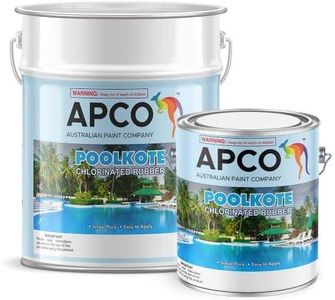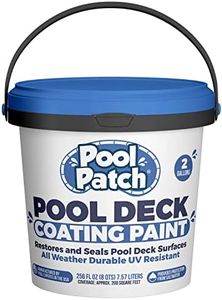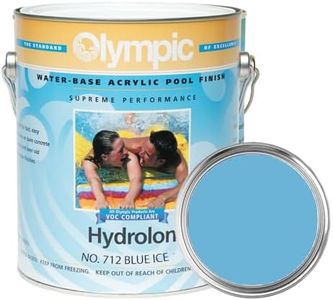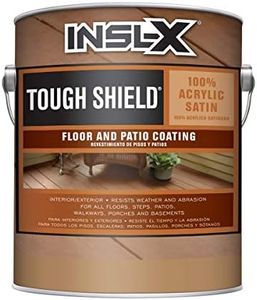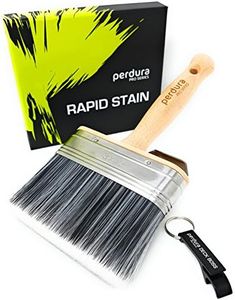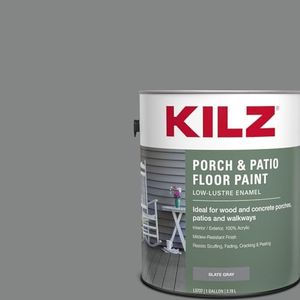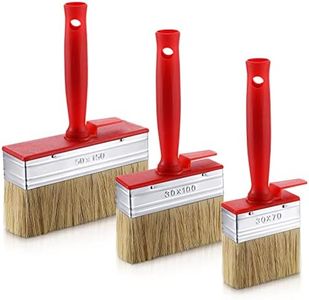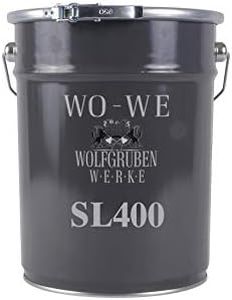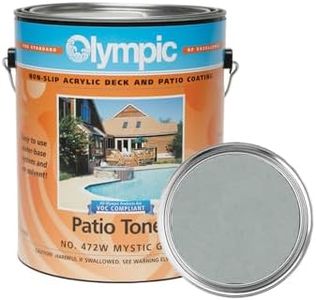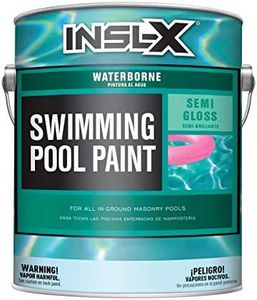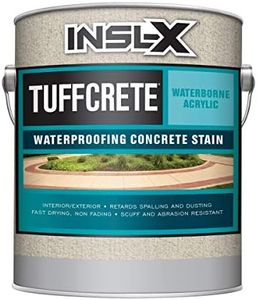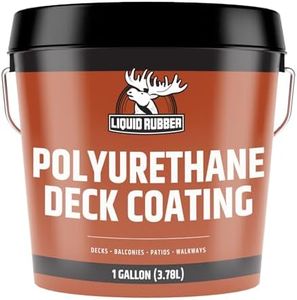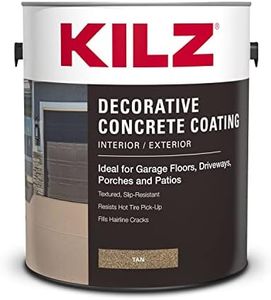We Use CookiesWe use cookies to enhance the security, performance,
functionality and for analytical and promotional activities. By continuing to browse this site you
are agreeing to our privacy policy
10 Best Concrete Pool Deck Paint
From leading brands and best sellers available on the web.Buying Guide for the Best Concrete Pool Deck Paint
Choosing the right paint for your concrete pool deck is important, as it has a big impact on both appearance and safety. The best pool deck paint can help prevent slips, withstand changing weather, resist chemicals, and keep your deck looking fresh for years. When picking a paint, think carefully about the conditions your pool deck faces and what you personally value—such as easy cleaning, comfort underfoot, or standout color. Understanding the most important specifications will help you select the best fit for your needs.Paint TypePaint type refers to the base and composition of the paint—common types for pool decks include acrylic, epoxy, and latex. This is important because each type has its own strengths. Acrylic paints dry fast and are easier for the DIYer, while epoxy paints are more durable and resist chemicals but usually need more prep and have a longer curing time. Latex is a bit less common but can be easy to apply. Think about how much use your deck gets, the climate, and how often you want to repaint. For decks that see a lot of water and sun, or for those who want a long-lasting finish, epoxy might be the best choice. For easy application and touch-ups, acrylic could be suitable.
Slip-ResistanceSlip-resistance indicates how much grip the painted surface provides, which matters for safety, especially around wet pool areas. Some paints come with added texture or allow you to add anti-slip additives. The values or attributes here range from smooth (least slip-resistant) to heavily textured (most slip-resistant). If the pool is used by children or older adults, or if safety is your top concern, choose a paint that is specifically labeled as slip-resistant or allows for easy addition of traction materials.
UV & Weather ResistanceUV and weather resistance means how well the paint withstands sunlight, rain, heat, and temperature changes. Decks exposed to strong sun will fade or peel faster without this feature. Paints can range from basic resistance (which might work for covered decks) to high resistance that protects against fading, cracking, and peeling in harsh weather. Pick a high-resistance paint if your deck is exposed to direct sunlight or frequent temperature shifts. For shaded or mostly indoor pools, you have more flexibility.
Chemical ResistanceChemical resistance describes how well the paint stands up to pool chemicals like chlorine, which can be quite harsh. Some paints are formulated to handle constant splashes, while others might degrade faster when exposed to those chemicals. If your deck is right at the pool's edge or often gets wet with pool water, choosing a paint marketed as pool chemical resistant is crucial. For decks set further away or in less harsh environments, this spec is less critical.
Coverage & ThicknessCoverage tells you how much area a paint can cover per can or gallon, and thickness refers to the layer of paint that will be on the deck. This impacts how many coats you’ll need and the final look. Values are usually given in square feet per gallon. If your deck has rough or porous concrete, coverage will be less, and you might need more paint or thicker coats. Smoother surfaces use less. Assess your deck’s condition—if it’s rough or older, plan on paint with good coverage and possibly a primer.
Color and FinishColor and finish describe the look the paint will give your deck. The finish might be matte, satin, or glossy. Lighter colors can reflect heat and keep surfaces cooler, while darker ones may absorb more heat but can hide stains better. Matte and satin finishes tend to be less slippery and show less wear, while glossy finishes are easier to clean but can be slipperier. Pick a color and finish based on your aesthetic preferences, heat concerns, and how much maintenance you’re willing to do.
